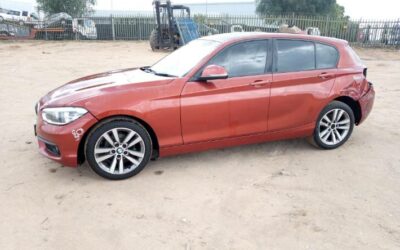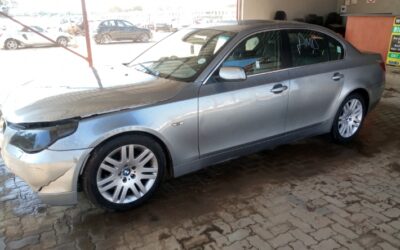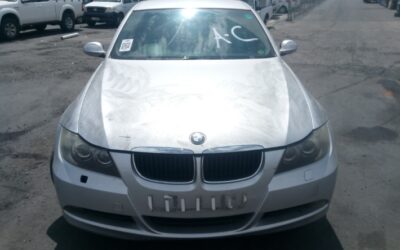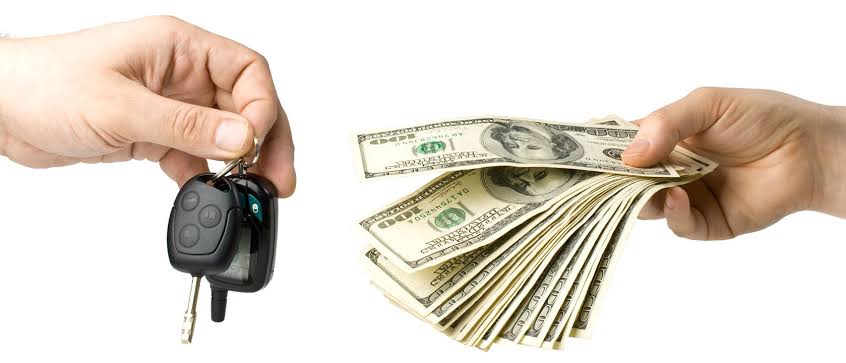Used BMW 3 Series E36 Spares For Sale
Looking for a BMW 3 Series E36 stripping for spares? FIND YOUR PARTSUsed BMW 3 Series E36 Parts For Sale
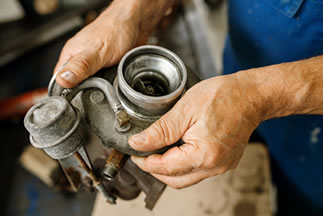
Used BMW spares and replacement parts for E36 BMW models found on South African roads are presented here. Whether you’re looking for engine parts, transmissions, turbos, or bodywork, our helpful sales staff is here to help!
Our BMW scrap yard staff is constantly dismantling E36 vehicles that have been damaged in accidents for parts. We’ve got everything you need on hand and ready to buy. Additionally, we only use high-quality vendors for our BMW E36 replacement parts, assuring that your car is exclusively supplied with quality aftermarket replacement components. A wide range of E36 parts are available for purchase, including electrical components, engine components like as crankshafts and piston rods, windshield wiper motors and ignition switches.
Part Request
Recent 3 Series E36 Part Requests
Date | vehicle-year | Engine | Requirements |
|---|
About the 3 Series E36
About The BMW 3 Series E36
The E36 model, aimed at building the heir to the E30, began in the mid-eighties. The E30 in production at that time was enjoying great sales success, despite some unresolved flaws such as the interior space that could be improved. For the future third generation of the 3 Series, moreover, it was considered appropriate to increase the external dimensions since, on the one hand, it would have been possible to keep up with the competition, which was churning out ever larger models with each generation change. On the other hand, the problem linked to habitability could have been solved or at least improved.
Another specification requested by the BMW top management at the start of the project was to improve the aspects linked to fuel consumption and engine efficiency, as well as operating costs. And again, the designers of the House of Propeller also optimize the safety factor. Finally, another request was to reduce to the minimum possible (for the time being, of course) the environmental impact linked to the life cycle of each model. More specifically, the car was required to be assembled with at least 80% recyclable components. The task of designing the new model was again entrusted to Claus Luthe, here in one of his last assignments at the House of Munich.
As for the mechanics, greater handling and better dynamic qualities were imposed in general. In this regard, an anecdote should be mentioned: for these reasons, it was decided to review the suspension sector, in particular the rear axle. To test these new geometries, a prototype with roadster bodywork was built in 1986 that fitted the new rear axle called the Z-link. This prototype was so successful with the public that BMW decided to produce it in a small series under the commercial name of BMW Z1. The debut of the new Series 3 took place in October 1990 in France, at the Miramas Test Circuit, when the model was finally presented to the press.
E36 Design and Interiors
As already mentioned, the E36 was one of Claus Luthe’s last works at BMW, before the nefarious events that tragically affected the personal life of the German chief designer, the consequent legal proceedings and his definitive resignation from the German company. Stylistically, the new E36 had practically nothing to do with the previous E30 : larger and more imposing (although it remained under four and a half meters in length), it boasted solutions destined to trace the new BMW stylistic course even after the farewell to Luthe and the arrival of Chris Bangle from the Fiat Group .
From whatever perspective you looked at the new 3 Series, the impression was that of dealing with a massive, robust car that gave a great sense of security. The front already showed the first great innovations: first of all the front light clusters, no longer with split round headlights and no longer surrounded by a uniform grille along the entire length of the nose. In the E36 there were in fact double optical groups enclosed under a single headlight, while the direction indicators were integrated on the sides of the optical groups themselves, although outside the faired area; and again, the bumper shield was completely new, more massive,
More massive lines than previously also for the side view, where the profile of the nose was more rounded and more aerodynamic, thanks also to the more inclined uprights, both front and rear. In this regard, it must be said that a good job was done on the aerodynamic penetration front, as demonstrated by the Cx equal to 0.29, decidedly optimized compared to the E30. The aerodynamic research was intended to contribute to the containment of consumption: the same faired front headlights also contributed to this. The rear pillars, characterized by the “Hofmeister elbow”, were also much more massive and to accentuate the feeling of robustness in the side was also contributed by the significantly higher belt line compared to the previous generation of the 3 Series. The tail was characterized by a sharper cut than in the past, thanks also to the sloping roof. which made it seem shorter. Its concave and truncated design was also given by the barely visible presence of an integrated spoiler that gave dynamism to the overall vision. The newly designed and trapezoidal rear lights were shorter and more enveloping than in the E30, and were partly integrated into the tailgate.
The interior of the E36 was more refined than in the E30. In fact, a great deal of work had been done in terms of ergonomics, optimizing the already well-known cockpit facing the driver. Even in terms of finishing, work was done to eliminate those defects that came to light in the previous generation, namely the plastics that are not of excellent quality, as well as the fabric upholstery (leather was optional), and also the sunroof with gaskets. which tended to deteriorate by letting the water seep after a shower or wash. These problems created real headaches for the designers, who eventually succeeded in introducing more accurate finishes and better materials. The instrumentation was essential and the dashboard design was anything but cheerful and / or personal,airbags , available on request. However, the level of habitability remained almost unchanged compared to before. Despite the significantly increased dimensions, the space available to rear passengers grew by only 3.8 cm. The 11 cm more in the length of the car body were basically dedicated to the adaptation of the front to the crash regulations and to the luggage compartment capacity.
Structure, mechanics and engines
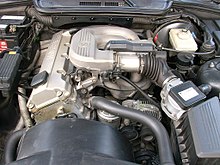
The engine compartment of a 316i, basic version of the E36 range
The modest 1.5-star EuroNCAP result obtained by the E36 during the crash tests must not give rise to misunderstandings [ POV interpretation ] : during the crash tests carried out at the beginning of its career, the E36 also managed to satisfy the USA regulations of the era [ citation needed ] , thus establishing itself as a well-designed car in terms of safety [ POV ] . This is also due to the much stiffer monocoque structure than in the E30 (we are talking about 45% more than the outgoing model) and the wheelbasemuch more elongated (13 cm more) than the previous model, the latter a factor that meant greater stability at high speeds. As already mentioned, a large part of the increase in overall dimensions in length was dedicated to the creation of a front characterized by more effective shock absorption. In addition, galvanized sheets and other plastic bodywork components were largely used. The latter solution contributed to weight reduction and therefore also to fuel savings. Stability on the road and therefore also safety were factors that were also optimized by the perfect distribution of weights between the front and rear, exactly 50% on each axle.
As for the suspension, BMW picked up the front end of the E30, with MacPherson -type architecture , while as regards the rear, the new Z-link scheme originally experimented on the concept that would have given birth to the Z1 made its debut. This new scheme, which a few years later would evolve as a multilink scheme and which would later become a must for all premium models, was at the time one of the first multilink solutions ever introduced in a road car (the first was the Mercedes -Benz 190 as early as 1982, but before the E36 there was also the aforementioned Z1). It was not yet a multilink in the strict sense, but a longitudinal arm assisted by two other superimposed arms. Telescopic hydraulic shock absorbers, coil springs and stabilizer bars were obviously mounted on both axles .
The braking system was of the mixed type in the versions with 4 -cylinder engine , while it provided disc brakes on the four wheels in the versions with the 6-cylinder engine. In this case, the front discs were of the self-ventilating type. ABS was standard across the range. As for the steering, the economical but effective rack and pinion solution was maintained: power steering was standard throughout the range, except in the very first examples of the basic version, namely the 316i . But very shortly after the commercial launch, this model too was able to take advantage of power assistance.
At its debut, the E36 was offered in four engines, all petrol , all injection and all catalyzed:
316i , the entry-level version to the range, equipped with the 1596 cm³ M40 4-cylinder single- shaft engine already mounted on the 316i E30 and capable of delivering a maximum power of 100 HP ;
318i , with a 1796 cm³ M40 4-cylinder single-shaft engine with a maximum power of 113 HP;
320i , with the new 1991 cm³ M50 6-cylinder twin -shaft engine capable of delivering a maximum power of 150 HP;
325i , top version equipped with the new M50 6-cylinder 2494 cm³ twin camshaft with a maximum power of 192 HP.
As for the transmission variants, a 5-speed manual gearbox was provided as standard across the range, but on request it was possible to opt for an automatic gearbox with torque converter , which in the versions with 4-cylinder engine ( 316i and 318i ) was 4-speed, while in the other two it was 5-speed.
E36 Accessories
Another of the weaknesses of the E36 was in the equipment, certainly not first of the class, especially considering the high price of each version. The standard equipment shared by all the versions planned for the debut included for Italy: ABS, central locking, electric exterior mirrors, power steering and electric front windows. What was listed was all that could be found as standard on the 316i and 318i models . The models for the Italian market 320i and 325i , on the other hand, could also count on climate control with air recirculation function, rear electric windows and adjustable steering wheel, accessories that were optional in the two basic models.
The optional list common to all versions included: driver and passenger side airbags, automatic gearbox, split rear sofa and sunroof. The 325i could also have traction control on request .
Evolution
The production was then started in the autumn of 1990, initially only in the sedan version (which replaced both the 4-door and the 2-door E30) and in the four engines described. In 1991 there was a first novelty that enriched the range of the newborn Bavarian sedan: the 325td , the first diesel E36 equipped with a 2498 cm³ turbodiesel engine capable of delivering a maximum power of 116 HP. The new model practically took the place of the previous 324td based on E30 .
In March 1992 there was the arrival of the coupé version (project name: E36 / 2 ), not only a 2-door variant of the basic sedan, but a car with redesigned bodywork, albeit in a discreet and at first sight inconspicuous . Among the innovations introduced with the coupé was the arrival of the 140 bhp 1.8 twin-shaft engine, directly derived from the previous 318is , and which in this case went to equip the new edition of the German sports car. Also in 1992 the 320i and 325i versions benefited from some technical improvements to the engines, improvements that included among other things the debut of VANOS technology.relating to the variable timing of the distribution . By the end of the same year there was the launch of the new M3 , powered by a brand new 3-liter engine capable of delivering up to 286 hp.
1995 BMW M3 Lightweight from 1995
In 1993 , in spring, there was the arrival of the E36 cabriolet (project name: E36 / 2C ), which took the place of the previous E30 cabriolet. In addition, two new versions were introduced: first of all, the 140 bhp 1.8 16v engine was also extended to the 318is 4-door , while on the diesel front, there was the arrival of the 325tds , whose engine, taken from that of the 325td , integrated also the intercooler , thus allowing to reach a maximum power of 143 HP. Also in 1993 a simplified set-up called Europe was introduced, available for the whole range and characterized by a slightly lower price (about 1 million lire less) in exchange for the renunciation of a small part of the standard equipment. In addition, there were some updates to the 4-cylinder engines, which slightly improved the delivery characteristics.
In 1994 , two new variants were derived from the normal production E36 range: first of all the station wagon version was introduced , also in this case called Touring (project name: E36 / 3 ), which marked the end of the latest E30s, which up to that moment they had resisted in the price list in their station wagon configuration; but the real novelty was the first BMW in the C segment , the 3 Series Compact , a two-and-a-half-volume version of the usual E36 sedans. Another novelty of the same year was the arrival of the 318tds, the cheapest version of the range: with its 1665 cm³ turbodiesel engine, equipped with intercooler, the power output was just 90 HP, but consumption was much lower than that of any other version of the E36 range.
Related:
We Deliver Used BMW Parts in South Africa!
We take great care in ensuring that your used BMW parts are delivered with the utmost professionalism and courtesy. Our couriers make sure they have a positive customer experience from start to finish, which reflects on us as well!
Sell Your BMW For Parts!
We provide a quick and easy service for those looking to scrap their non-running BMW vehicles. With over 20 years of experience in auto salvage, you can rest assured that your car will be processed professionally and efficiently by us!
You Are In Safe Hands!
With a team of automotive experts, BM Scrap Yard provides its customers with only the best used BMW auto parts in South Africa. With quick delivery times & easy access for anyone who needs it, there's no reason not to find the part you need!
BMW Vehicles Stripping For Spares
2018 BMW 118i (F20) stripping for spares
This BMW is accident damaged and being stripped for its spare parts. If you would like to buy a specific component of this BMW model, please email us through our contact us page. A,/,C,Compressor,Pulley Front,Left,Brake,Caliper Front,Left,Door,Window,Regulator,Motor...
2006 BMW 523i Automatic (E60) Stripping For Spares
After an accident, this BMW was deemed unsalvageable and towed away. Make sure you get in touch with us if you have questions about the vehicle's specs or would want to know the cost of any particular components. The following are common parts requested for this...
2006 BMW 320D (E90) stripping for spares
This BMW is being stripped for it's spare parts. If you would like to buy a part of this model, please email us through our contact us page. Crankshaft Door,Panels window,mechanism Ignition,Switch door,glass Gearbox Differential CAS radiator,Fan Heat,Exchanger...

